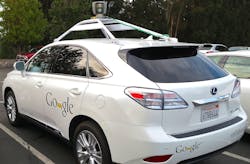Is the nation’s grand tech boom really an innovation funk?
In a world with self-driving cars, holographic gaming, drone-delivered pizza, AI computers, hoverboards (ones that actually hover), 24/7 connectivity to every corner of the world, heck, even one-hour grocery deliveries, it’s difficult to comprehend the thought that we’re in a downcycle of technological achievement.
The stuff of science fiction truly has become reality: we’re wearing watches that allow us to make video calls; we’re running our businesses and lives from robust, handheld computers; we’re using deep data and connectivity to reinvent business models; we’re powering our homes, offices, and cars with wind, solar, geothermal, and battery sources; we’re programming robots to clean our houses, assemble our products, construct our buildings, even cook our food; we’re conducting advanced surgical procedures remotely, and in a fraction of the time. The list goes on and on.>
But is all this stuff—the gadgets, the apps, the micro-computers, the entertainment and media—actually enriching the nation’s standard of living? Is it igniting the economy to benefit the greater good? Does it make us happier and more fulfilled as a nation?
Is all this stuff—the gadgets, the apps, the micro-computers, the entertainment and media—actually enriching the nation’s standard of living? Is it igniting the economy to benefit the greater good? Does it make us happier and more fulfilled as a nation?
By and large, no, argues American economist and Northwestern University social sciences professor Robert J. Gordon, in his new book, “The Rise and Fall of American Growth: The U.S. Standard of Living Since the Civil War.”
Gordon asserts that, despite popular belief, the country is not in a great age of technological and digital innovation. Actually, it’s quite the contrary—we’re in the midst of a tech innovation downturn, at least when compared to the last great innovation era: 1870 to 1970.
During that time, writes Gordon, medical breakthroughs raised the average life expectancy from 45 to 72; transportation advanced from horse and buggy to car to plane (to spaceship!); communication progressed from paper to radio to television (email was invented two years later, in 1972). Homeownership skyrocketed (especially after WWII), and houses featured modern luxuries like electric lighting, indoor plumbing, and home appliances.
Gordon contends that the century-long period following the Civil War is unlike anything we are ever going to see again. He posits that some inventions are more important than others, and that the post-Civil War era just happened to produce a multitude of game changers across nearly every major industry. The light bulb, internal-combustion engine, mason jar, condensed milk, refrigerator, elevator, anesthetics, X-ray, antibiotics, antiseptic surgery, waterworks, assembly line (and the 40-hour work week)—add them up and then consider your iPhone. Not so impressive, is it?
In his recent review of Gordon’s book, BD+C Associate Editor David Malone suggests that Gordon’s modern tech slowdown could actually be the calm before the storm. The apps, the data, the gadgets, the evermore-powerful computers, the infinitely connected world, the nanosciences—they’re in their infancy. The world’s brightest minds (human and synthetic; think IBM’s Watson) need time to invent, solve, ideate, collaborate, innovate, improve, perfect.
I don’t know about you, but I choose to believe that we’re on the cusp of the next great era of innovation. The question remains: Will the results improve or diminish our quality of life?
About the Author

David Barista
David Barista is Editorial Director of Building Design+Construction and BDCnetwork.com, properties that combined reach more than 100,000 commercial building professionals, including architects, engineers, contractors, and building owners. David has covered the U.S. construction industry for more than a decade, previously serving as Editor-in-Chief of BD+C, Professional Builder, Custom Builder, and HousingZone.com. He has won numerous editorial awards, including six Jesse H. Neal Awards and multiple honors from the Construction Writers Association and the American Society of Business Publication Editors.
Email: [email protected]
